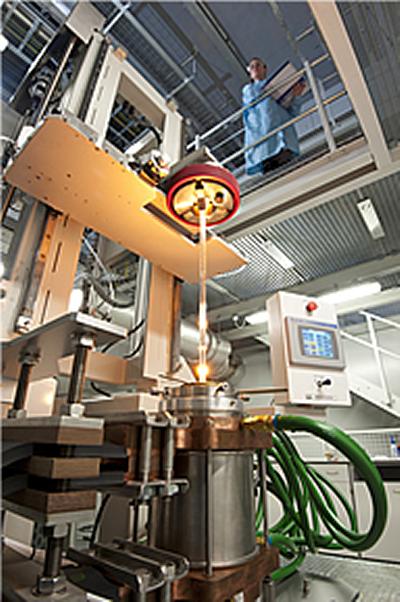Pioneering research aims to make the internet faster

David Willetts, Minister for Universities and Science, today (Friday 28 January) announced £7.2 million of investment in research that could revolutionise the internet.
Led by Professor David Payne of the University of Southampton, the 'Photonics HyperHighway' project will bring together world-leading scientists from the universities of Southampton and Essex and industry partners, including BBC Research and Development, to pioneer new technologies capable of making broadband internet 100 times faster.
The six-year project, funded by the Engineering and Physical Sciences Research Council (EPSRC), will look at the way fibre optics are used, and develop new materials and devices to increase internet bandwidth. This will ensure that the web can cope with rising demand for broadband and the increasing use of services such as internet television and music downloads.
These breakthroughs would benefit many commercial businesses, including retail and banking, by enabling faster transaction times.
Announcing the investment during a visit to officially open the University of Southampton's state-of-the-art Mountbatten Building, where much of the research will be conducted, David Willetts said:
"The internet is fundamental to our lives and we use it for a huge range of activities - from doing the weekly food shop to catching up with friends and family. The number of broadband subscribers has grown vastly in the past 10 years, and we need to ensure the web infrastructure can continue to meet this demand.
"On top of this, the internet industry is worth an estimated £100 billion in the UK, so it is in our interest to make it even better for businesses and help boost economic growth.
"The Photonics HyperHighway project has the potential to truly revolutionise the internet, making it much faster and more energy-efficient. The project is also a shining example of the UK's world-leading role in this area of research, and I look forward to the exciting breakthroughs it will bring."

Professor Payne, Director of Southampton's Optoelectronics Research Centre, whose innovations in fibre and amplification enabled the development of the internet, said: "Now is the time to look ahead to develop the UK infrastructure of the future. Our ambition is nothing less than to rebuild the internet hardware to suit it to the needs of 21st-century Britain.
"Traffic on the global communications infrastructure continues to increase 80 per cent year-on-year. This is driven by rapidly expanding and increasingly demanding applications, such as internet television services and new concepts like cloud computing. What this project proposes is a radical transformation of the physical infrastructure that underpins these networks."
Through looking at every detail of the infrastructure that underpins the internet, the Photonics HyperHighway project has the potential to achieve seamless, ultra-fast connections that will link people and business across the world.
Southampton's £55 million Mountbatten complex replaces the building of the same name that was destroyed by fire in 2005. Equipped with high-tech laboratories which represent a further investment of around £50 million, the Mountbatten Building houses the Southampton Nanofabrication Centre, a state-of-the-art facility for microfabrication and high-spec nanofabrication, together with the world-renowned research laboratories of the University's Optoelectronics Research Centre.
Professor David Payne talks about why the Photonics HyperHighway is important:
Professor David Payne talks about the impact of the Photonics Hyperhighway on the UK:
Notes for editors
The Photonics HyperHighway project's industry partners are BBC Research and Development , Fianium and Oclaro.